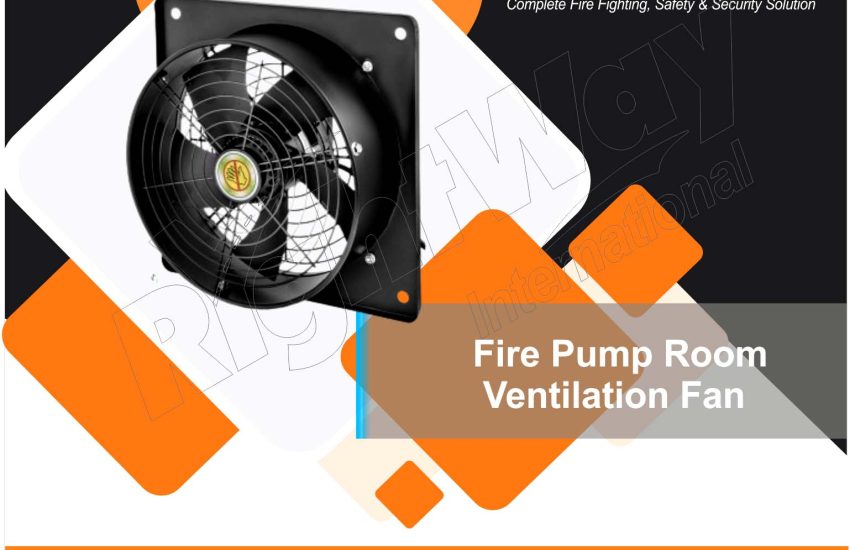Fire Pump Room Ventilation Fan: Proper ventilation in fire pump rooms is crucial for ensuring the safety and reliability of fire protection systems. Fire pump rooms house essential equipment that must operate efficiently, even under emergency conditions. This article explores the importance of ventilation fans in these spaces, their requirements, and best practices for installation and maintenance.
Importance of Fire Pump Room Ventilation Fan
- Equipment Cooling: Fire pumps and associated equipment generate heat during operation. Adequate ventilation helps dissipate this heat, preventing overheating and ensuring optimal performance.
- Fumes and Emissions Control: Diesel-powered fire pumps can emit harmful gases. Ventilation helps to reduce the concentration of exhaust fumes, promoting a safer environment for personnel.
- Humidity Control: Excess moisture can lead to corrosion and equipment degradation. Ventilation helps manage humidity levels, prolonging the life of equipment.
- Emergency Access: In an emergency, a well-ventilated room is safer for firefighters and maintenance personnel, reducing the risk of smoke inhalation and ensuring quick access to critical equipment.
Fire Pump Room Ventilation Fan Requirements
Ventilation systems in fire pump rooms must meet specific regulatory and design standards, often dictated by local building codes and fire safety regulations. Key considerations include:
- Air Changes per Hour (ACH): The required number of air changes per hour varies by jurisdiction and the size of the room. Typically, a minimum of 6 ACH is recommended.
- Fan Types:
- Exhaust Fans: These remove stale air and contaminants, ensuring a continuous flow of fresh air.
- Supply Fans: These bring in fresh air to balance the exhaust and maintain pressure in the room.
- Power Supply: Ventilation fans should have a reliable power source, preferably with backup options to ensure operation during emergencies.
- Control Systems: Automated controls can enhance efficiency, activating fans based on temperature or humidity levels.
Design Considerations
- Location and Size: Fans should be strategically located to maximize airflow without creating dead spots. The size of the fans must be adequate to meet the room’s ventilation needs.
- Duct work: Properly designed duct work is essential to direct airflow effectively. Considerations for noise reduction and minimizing pressure drops are important.
- Filtration: Incorporating filters can improve air quality by trapping dust and contaminants, particularly in industrial settings.
- Maintenance Access: Fans and duct systems should be easily accessible for routine maintenance, inspections, and repairs.
Maintenance Practices
- Regular Inspections: Routine checks of fan operation, duct cleanliness, and filter conditions are crucial to ensure the system functions correctly.
- Cleaning: Dust and debris can accumulate over time, impacting airflow and efficiency. Regular cleaning schedules should be established.
- Lubrication and Repairs: Mechanical parts may require lubrication, and any signs of wear or damage should be addressed promptly.
- Testing Emergency Operations: Conduct regular tests of the ventilation system to ensure it functions correctly in emergency situations, simulating conditions to validate performance.
Conclusion
Fire Pump Room Ventilation Fan play a vital role in the functionality and safety of fire pump rooms. Proper design, installation, and maintenance of these systems are essential for optimal operation, regulatory compliance, and the overall safety of personnel. By adhering to best practices and guidelines, facility managers can ensure that fire pump rooms remain effective and safe environments for critical fire protection operations.


